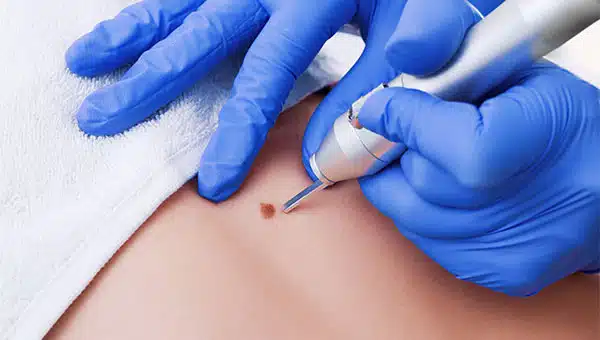Skin lesions refer to any abnormal growth or change in the skin's texture or color. They can manifest in various forms, including moles, warts, cysts, and skin tags. While many Skin Lesion Removal in Dubai are benign and harmless, some may require medical attention due to potential health risks or cosmetic concerns.
Types of Skin Lesions:
- Moles: Usually brown or black, moles are clusters of melanocytes (pigment-producing cells). Most moles are harmless, but changes in size, shape, or color should be evaluated by a dermatologist.
- Warts: Caused by the human papillomavirus (HPV), warts appear as small, rough growths on the skin. They can occur anywhere on the body and may spread if left untreated.
- Cysts: These are closed sacs or pockets of tissue filled with fluid, pus, or other material. They can develop anywhere on the body and may be tender or painful.
- Skin Tags: Also known as acrochordons, skin tags are small, soft, benign growths that typically hang off the skin by a thin stalk. They are common in areas where skin rubs against skin.
Treatment Options:
The approach to removing skin lesions depends on the type, location, and individual preferences. Here are common methods:
- Excision: Surgically cutting out the lesion under local anesthesia. This method is often used for moles, cysts, and some skin cancers.
- Cryotherapy: Freezing the lesion with liquid nitrogen, causing it to fall off. This is effective for warts, skin tags, and some precancerous lesions.
- Electrosurgery: Burning the lesion with an electric current. It's useful for removing skin tags, warts, and small benign tumors.
- Laser Therapy: Using laser light to vaporize or destroy the lesion. This method is precise and often used for cosmetic reasons or to treat certain types of skin cancer.
- Topical Treatments: Applying medications such as salicylic acid or topical chemotherapy creams to treat certain types of lesions, like warts or precancerous skin changes.
When to Seek Medical Advice:
It's essential to have any new or changing skin lesion evaluated by a dermatologist or healthcare provider. Signs that warrant medical attention include:
- Changes in size, shape, color, or texture of a mole.
- Bleeding, itching, or pain in a lesion.
- Rapid growth or spreading of a lesion.
- Ulceration or crusting on the surface of a lesion.
- Lesions that fail to respond to home treatments.
Prevention:
While not all skin lesions can be prevented, practicing good skin care habits can help minimize risks. These include using sunscreen, avoiding excessive sun exposure, and promptly treating any cuts or wounds to prevent infection.
In conclusion, skin lesions encompass a wide range of abnormal skin growths. Removal methods vary depending on the type of lesion and individual circumstances. Seeking professional medical advice ensures proper diagnosis and appropriate treatment.

